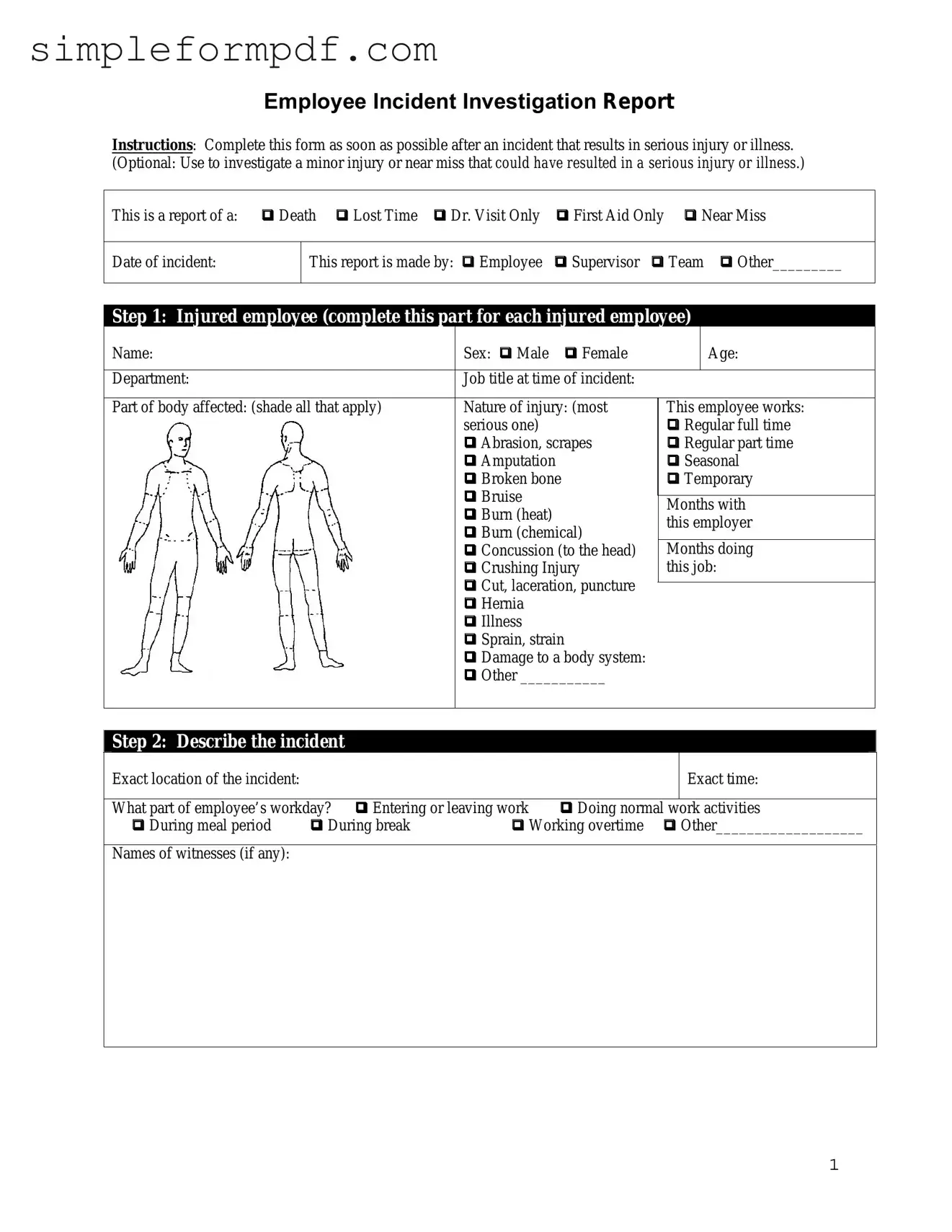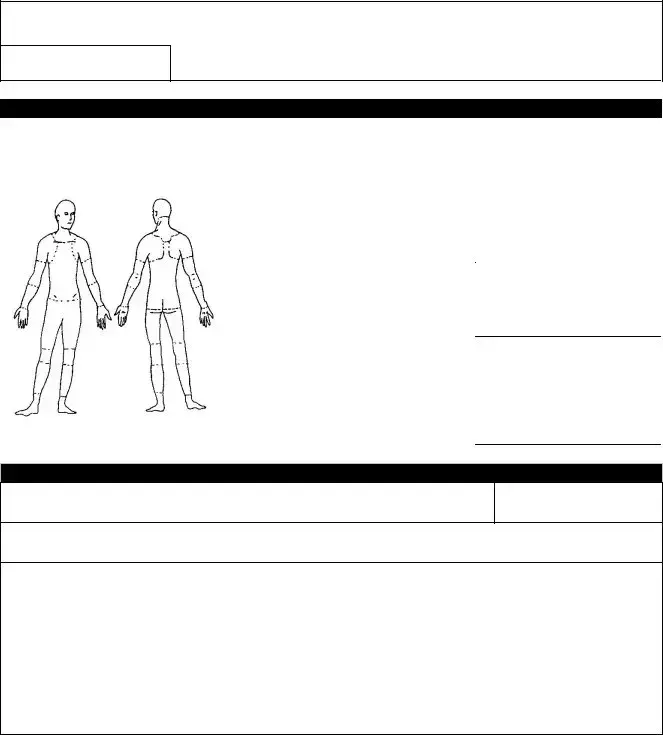Employee Incident Investigation Report
Instructions: Complete this form as soon as possible after an incident that results in serious injury or illness.
(Optional: Use to investigate a minor injury or near miss that could have resulted in a serious injury or illness.)
This is a report of a: Death Lost Time Dr. Visit Only First Aid Only Near Miss
This report is made by: Employee Supervisor Team Other_________
Step 1: Injured employee (complete this part for each injured employee)
Name: |
Sex: Male Female |
|
Age: |
|
|
|
|
Department: |
Job title at time of incident: |
|
|
|
|
|
Part of body affected: (shade all that apply) |
Nature of injury: (most |
This employee works: |
|
serious one) |
Regular full time |
|
Abrasion, scrapes |
Regular part time |
|
Amputation |
Seasonal |
|
Broken bone |
Temporary |
|
Bruise |
Months with |
|
|
Burn (heat) |
|
this employer |
|
Burn (chemical) |
|
|
|
|
Concussion (to the head) |
Months doing |
|
Crushing Injury |
this job: |
|
Cut, laceration, puncture |
|
|
|
|
|
|
Hernia |
|
|
|
Illness |
|
|
|
Sprain, strain |
|
|
|
Damage to a body system: |
|
|
|
Other ___________ |
|
|
|
|
|
|
Step 2: Describe the incident
Exact location of the incident:
|
|
|
|
What part of employee’s workday? Entering or leaving work |
Doing normal work activities |
During meal period |
During break |
Working overtime Other___________________ |
Names of witnesses (if any):
Written witness statements:
What personal protective equipment was being used (if any)?
Describe, step-by-step the events that led up to the injury. Include names of any machines, parts, objects, tools, materials and other important details.
|
Description continued on attached sheets: |
|
|
|
|
Step 3: Why did the incident happen? |
|
Unsafe workplace conditions: (Check all that apply) |
Unsafe acts by people: (Check all that apply) |
Inadequate guard |
Operating without permission |
Unguarded hazard |
Operating at unsafe speed |
Safety device is defective |
Servicing equipment that has power to it |
Tool or equipment defective |
Making a safety device inoperative |
Workstation layout is hazardous |
Using defective equipment |
Unsafe lighting |
Using equipment in an unapproved way |
Unsafe ventilation |
Unsafe lifting |
Lack of needed personal protective equipment |
Taking an unsafe position or posture |
Lack of appropriate equipment / tools |
Distraction, teasing, horseplay |
Unsafe clothing |
Failure to wear personal protective equipment |
No training or insufficient training |
Failure to use the available equipment / tools |
Other: _____________________________ |
Other: __________________________________ |
|
|
Why did the unsafe conditions exist?
Why did the unsafe acts occur?
Is there a reward (such as “the job can be done more quickly”, or “the product is less likely to be damaged”) that may
have encouraged the unsafe conditions or acts? Yes No If yes, describe:
Were the unsafe acts or conditions reported prior to the incident? |
Yes |
No |
|
|
|
Have there been similar incidents or near misses prior to this one? |
Yes |
No |
Step 4: How can future incidents be prevented?
What changes do you suggest to prevent this incident/near miss from happening again?
|
Stop this activity |
Guard the hazard |
Train the employee(s) |
Train the supervisor(s) |
|
Redesign task steps |
Redesign work station |
Write a new policy/rule |
Enforce existing policy |
Routinely inspect for the hazard Personal Protective Equipment Other: ____________________
What should be (or has been) done to carry out the suggestion(s) checked above?
Description continued on attached sheets:
Step 5: Who completed and reviewed this form? (Please Print)
Written by: |
Title: |
Department: |
Date: |
|
|
Names of investigation team members: |
|



